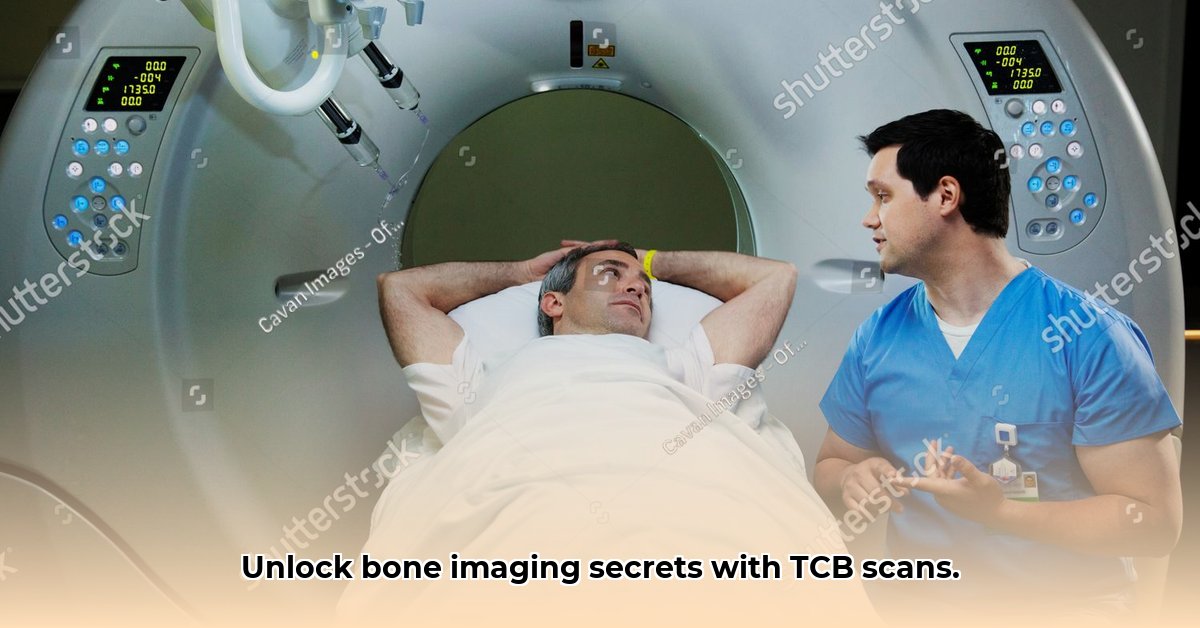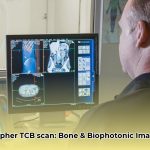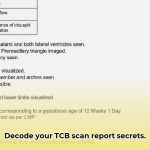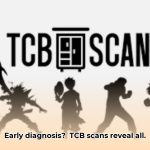Are you seeking detailed insights into your bone health beyond what standard X-rays can offer? This comprehensive guide explains everything about triple-phase bone scans (TCB scans). From understanding its purpose and how it works, to what you can anticipate during and after the procedure, this guide provides clarity. We’ll explore the benefits and limitations, and even touch on the future advancements of this critical medical technology. Whether you’re a patient, a healthcare professional, or simply curious, this resource will help you understand TCB scans.
Understanding TCB Scans and Musculoskeletal Imaging
A TCB scan is a powerful diagnostic tool for visualizing your bones with precision. This specialized imaging procedure utilizes a small amount of radioactive material (a tracer) to create detailed images of your skeletal system. These images can reveal bone abnormalities that may be hidden on regular X-rays. The TCB scan serves as a magnifying glass for your bones, providing valuable insights into your bone health and guiding appropriate treatment strategies.
How a TCB Scan Works: A Detailed Look at the Three-Phase Process
A TCB scan, or triple-phase bone scan, is a nuclear medicine technique known for its detailed bone imaging capabilities. It involves injecting a small amount of radioactive tracer into your vein. This tracer travels through your bloodstream, and areas with increased bone activity attract and accumulate the tracer, highlighting potential underlying issues.
The TCB scan is divided into three distinct phases, each offering a unique perspective on bone health:
Step 1: The Flow Phase (Rapid Blood Flow Assessment)
Immediately following the tracer injection, a series of images are captured, visualizing the flow of blood containing the tracer through your blood vessels towards your bones. This phase helps identify areas with healthy blood supply efficiently. It also detects any abnormalities in blood flow to the bones, such as blockages or increased vascularity. Think of it as mapping a river system to identify areas of strong or restricted flow.
Step 2: The Blood Pool Phase (Tracer Distribution and Accumulation)
Images are again captured a few minutes after the initial flow phase. This phase reveals how the tracer distributes and accumulates within the blood vessels of the bones. It visualizes areas of increased blood circulation and inflammation around bone structures. This phase helps differentiate between superficial soft tissue abnormalities and deeper bone issues.
Step 3: The Delayed Phase (Evaluation of Long-Term Bone Metabolism)
Several hours after the injection, typically after a period of hydration and bladder emptying, a final set of images is captured. This phase identifies areas of increased bone metabolism, indicating where the bone is actively remodeling or repairing itself. This phase shows how the tracer has been absorbed by the bone tissue itself. Doctors can then identify abnormalities, like fractures, infections, or tumors, that require further investigation.
Combining all three phases provides a more comprehensive and accurate picture of your bones than a single-phase bone scan or other imaging techniques. By analyzing the tracer uptake patterns across the three phases, physicians can more accurately diagnose a variety of bone conditions. What if one phase shows an abnormality, but the others don’t? That discrepancy is a crucial piece of diagnostic information that helps refine the diagnosis.
Applications of TCB Scans: Diagnosing a Wide Range of Bone and Joint Conditions
TCB scans are remarkably versatile, providing detailed diagnostic imaging for a wide range of bone-related issues, including:
- Cancer Detection: Detecting bone metastases (cancer that has spread to the bones) and monitoring the effectiveness of cancer treatments.
- Infection Detection: Identifying bone infections (osteomyelitis), which are serious conditions requiring immediate treatment. Also detecting infections in prosthetic joints.
- Injury Assessment: Diagnosing stress fractures (tiny cracks in bones), avascular necrosis (loss of blood supply to bone), and other bone injuries that may be missed by X-rays, facilitating accurate orthopedic diagnosis and management.
- Arthritis Evaluation: Assessing the severity and progression of arthritis, including osteoarthritis, rheumatoid arthritis, and psoriatic arthritis, to guide treatment decisions.
- Unexplained Bone Pain: Investigating the source of persistent bone pain when other imaging studies are inconclusive.
- Avascular Necrosis: Detecting early stages of avascular necrosis (bone death due to lack of blood supply), allowing for timely intervention to prevent disease progression.
Orthopedic surgeons, oncologists, rheumatologists, and infectious disease specialists frequently utilize TCB scans to aid in accurate diagnoses, making it an invaluable tool in musculoskeletal diagnosis.
Weighing the Pros and Cons of TCB Scans
Like all medical procedures, TCB scans have both advantages and disadvantages:
| Advantage | Disadvantage |
|---|---|
| High sensitivity for detecting bone abnormalities, ensuring accurate diagnosis | Involves exposure to a small amount of radiation; the radiation dose is generally low, but it’s important to consider the risks and benefits with your doctor, especially if you are pregnant or planning to become pregnant. |
| Non-invasive, avoiding surgery or incisions and ensuring patient comfort | Small risk of allergic reaction to the tracer; allergic reactions are rare and usually mild, but it’s important to inform your doctor of any known allergies. |
| Versatile, applicable for diagnosing a wide range of bone conditions | Subtle bone problems may be challenging to see; the accuracy of the scan depends on the size and location of the abnormality and the expertise of the radiologist. |
| Provides detailed information about bone activity, helping differentiate between various conditions | Requires following preparation instructions carefully; proper hydration and bladder emptying are important for optimizing image quality and reducing radiation exposure to the bladder. |
Understanding Your TCB Scan Results and Diagnostic Accuracy
The images produced by a TCB scan require careful interpretation by a trained expert: a radiologist. The radiologist analyzes the images from each phase, comparing the tracer uptake patterns to normal bone activity. They look for areas of increased or decreased tracer uptake, as well as any other skeletal abnormalities. The radiologist then compares these findings with your medical history, physical examination, and other tests to arrive at a final diagnosis. The radiologist compiles their findings into a detailed report, explaining what the images reveal and how it relates to your bone health. This report is then sent to your referring physician, who will discuss the results with you and develop a treatment plan.
Emerging Trends and the Future of TCB Scan Technology
Medical technology is continually evolving, and TCB scans are no exception. Scientists and engineers are constantly working to refine and improve TCB scan technology. Future advancements may include:
- Higher-resolution imaging, providing clearer and more detailed images of bone structures.
- Improved tracers with higher specificity for certain bone conditions, reducing the risk of false positives.
- Lower radiation doses, minimizing the exposure to radiation during the procedure.
- Faster scan times, reducing the amount of time patients need to spend in the imaging facility.
- Artificial intelligence (AI) algorithms to assist radiologists in interpreting the images, improving accuracy and efficiency.
The goal of these advancements is to enhance the accuracy, safety, and efficiency of TCB scans, leading to earlier detection and better treatment of bone diseases. The future of this valuable imaging technique looks promising, with ongoing research focused on improving all aspects of the scan and promoting better patient care.
Interpreting Triple Phase Bone Scan Results for Optimal Diagnosis
Key Takeaways:
- Triple-phase bone scans, using tracers like Tc99m-MDP, offer a non-invasive approach to assess bone health and identify skeletal abnormalities.
- The three phases (flow, blood pool, and bone) deliver thorough data on blood flow, inflammation, and bone metabolism, enhancing imaging analysis reliability.
- This technique exhibits high sensitivity in detecting bone issues like infections and fractures, enabling prompt medical intervention. Its specificity can be limited, requiring integration with other diagnostic modalities.
- Accurate interpretation requires expertise and correlation with clinical findings to avoid misdiagnosis.
- Collaboration with clinicians is key to achieving the most accurate diagnosis.
Triple-Phase Process: A Detailed Examination of Bone Metabolism
The triple-phase bone scan is a powerful diagnostic tool offering a dynamic view of bone activity. The scan utilizes a radioactive tracer, typically technetium-99m methylene diphosphonate (Tc99m-MDP). This tracer is injected into the bloodstream, followed by image acquisition during three distinct phases:
-
Flow Phase: This initial phase captures the rapid distribution of the tracer through the bloodstream. It highlights blood flow to the area of interest, acting like a map depicting major arteries. Areas with increased blood flow appear brighter, indicating inflammation or increased vascularity.
-
Blood Pool Phase: Following the rapid flow phase, this phase shows the tracer pooling within the blood vessels of the bone. Providing insights into vascular distribution, it helps distinguish between vascular and avascular processes; it is like studying the capillary network in detail.
-
Delayed Phase (Bone Phase): This phase shows the actual tracer uptake into the bone. This provides information about bone metabolism, assisting in identifying areas of increased or decreased activity. Think of it as a measure of bone cell activity. Areas of increased metabolic activity (like in a fracture or infection) appear as “hot spots,” meaning areas of increased tracer concentration.
Interpreting the Images: Key Indicators of Musculoskeletal Conditions
TCB scan results require careful analysis of all three phases by experienced radiologists. They examine patterns of tracer uptake to detect abnormalities. Increased tracer uptake (“hot spots”) points to areas of increased metabolic activity, indicating conditions such as:
- Fractures: A fracture will
- Choosing the Right Portable Hydro Turbine for Your Needs - December 14, 2025
- Best Portable Hydro Generators for Off-Grid and Outdoor Power - December 13, 2025
- Choosing the Right Generator with Water for Off-Grid Power - December 12, 2025
















